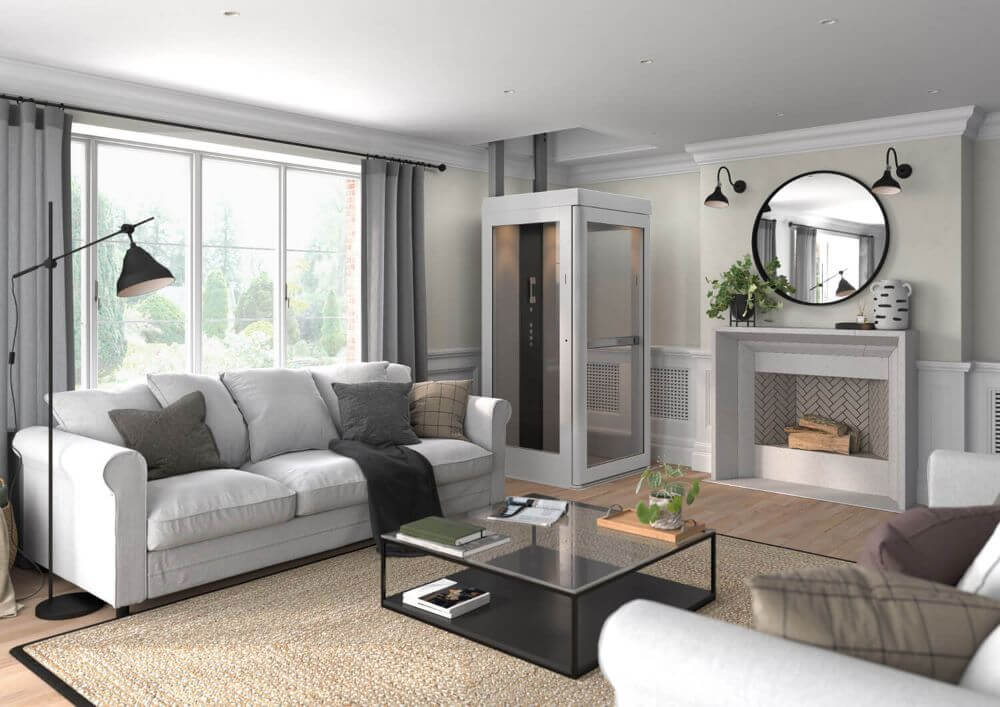Exploring the Different Types of Elevators
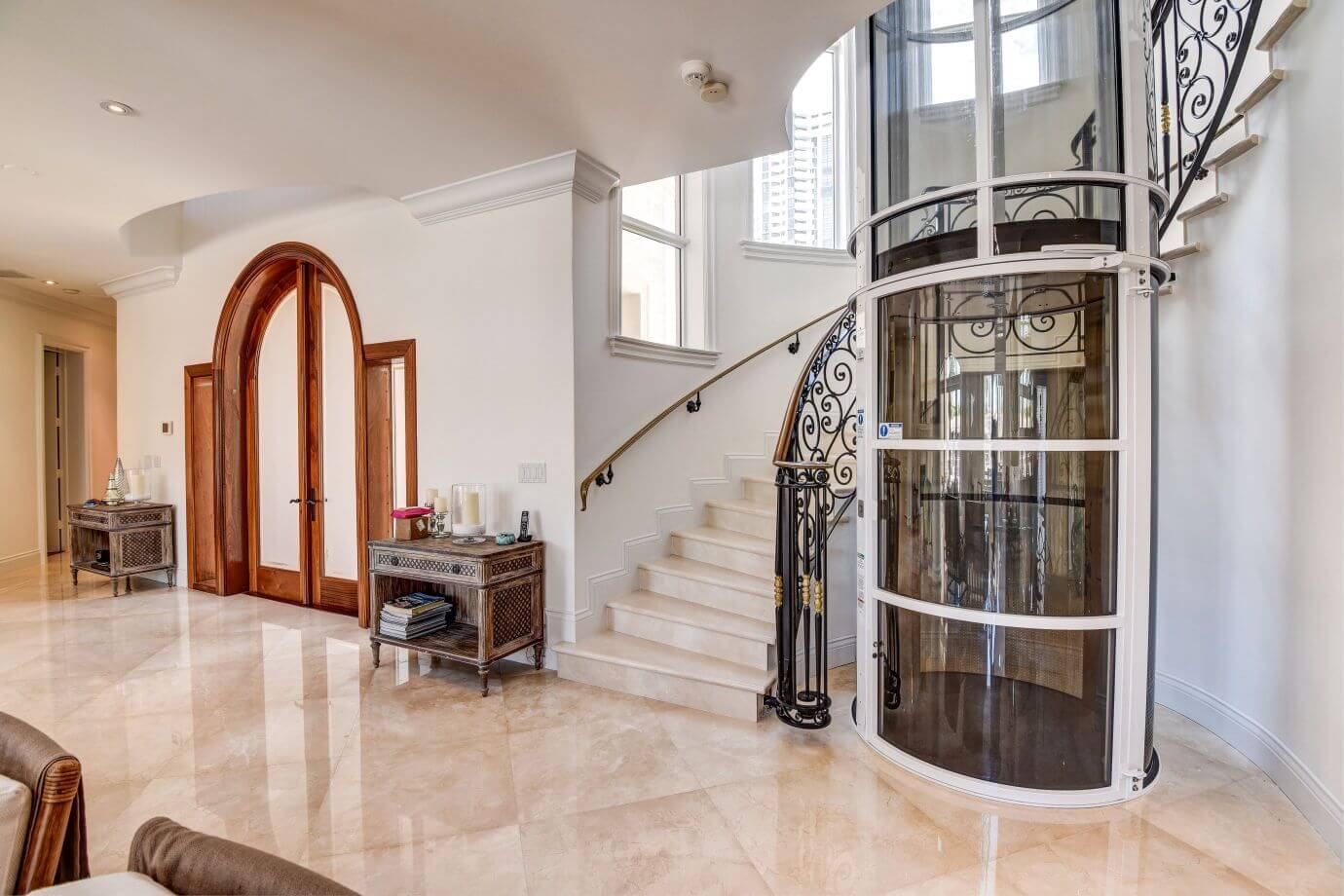
Residential elevators have become increasingly popular in homes, offering convenience and accessibility. They facilitate easier movement between floors within a home, especially for those with limited mobility. Residential elevators add value and functionality and can become a central design element in a multi-story home.
Recognizing its clients’ diverse needs and preferences, Ascend Residential Elevators & Lifts emerges as a frontrunner in providing innovative and reliable residential elevator solutions.
Specializing in a broad spectrum of elevators, Ascend Residential Elevators & Lift offers a unique blend of style, efficiency, and safety. It encompasses different types of elevators to meet the specific requirements of living spaces.

Hydraulic Elevators
This type of elevator operates using a piston within a cylinder to push the elevator cab up or down. This system is powered by a hydraulic pump, which pushes hydraulic fluid into the cylinder to facilitate the movement of the elevator.
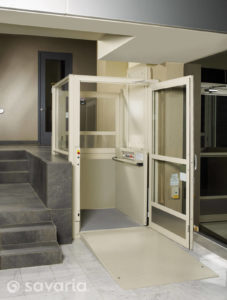
Benefits of Hydraulic Elevators
Hydraulic elevators offer several key benefits, making them a popular choice for various homes :
- Smooth Operation: One of the primary benefits of hydraulic elevators is their smooth operation, providing passengers with a comfortable and seamless ride. The hydraulic system allows precise control of the elevator car’s movement, resulting in a comfortable and steady ascent or descent.
- Cost-Effective: Hydraulic elevators are cost-effective due to simpler systems. Some even lack a machine room, reducing installation and maintenance expenses compared to other elevators.
Drawbacks of Hydraulic Elevators
While hydraulic elevators offer numerous advantages, making them a practical choice for various applications, it’s crucial to consider their drawbacks to make an informed decision based on specific building requirements and preferences.
- Environmental Impact: The hydraulic fluid used in these elevators can be hazardous if not properly contained. This raises environmental concerns regarding the potential for leaks or spills, which could contaminate the surrounding environment if not managed correctly.
- Space Requirements: In residential settings, hydraulic elevators require significant space for the pit and potentially a machine room
Although hydraulic elevators have their limitations, their reliability and cost-effectiveness continue to make them a viable option for many projects, particularly in scenarios where the limitations of height and environmental implications can be effectively managed.
Machine-Room-Less (MRL) Elevators
Machine-Room-Less (MRL) Elevators integrate the elevator’s machinery, typically housed in a separate room, directly into the elevator shaft or nearby, substantially saving valuable building space.
MRL elevators are primarily used as passenger elevators but are increasingly considered light-duty freight, given their space-saving and energy-efficient nature.
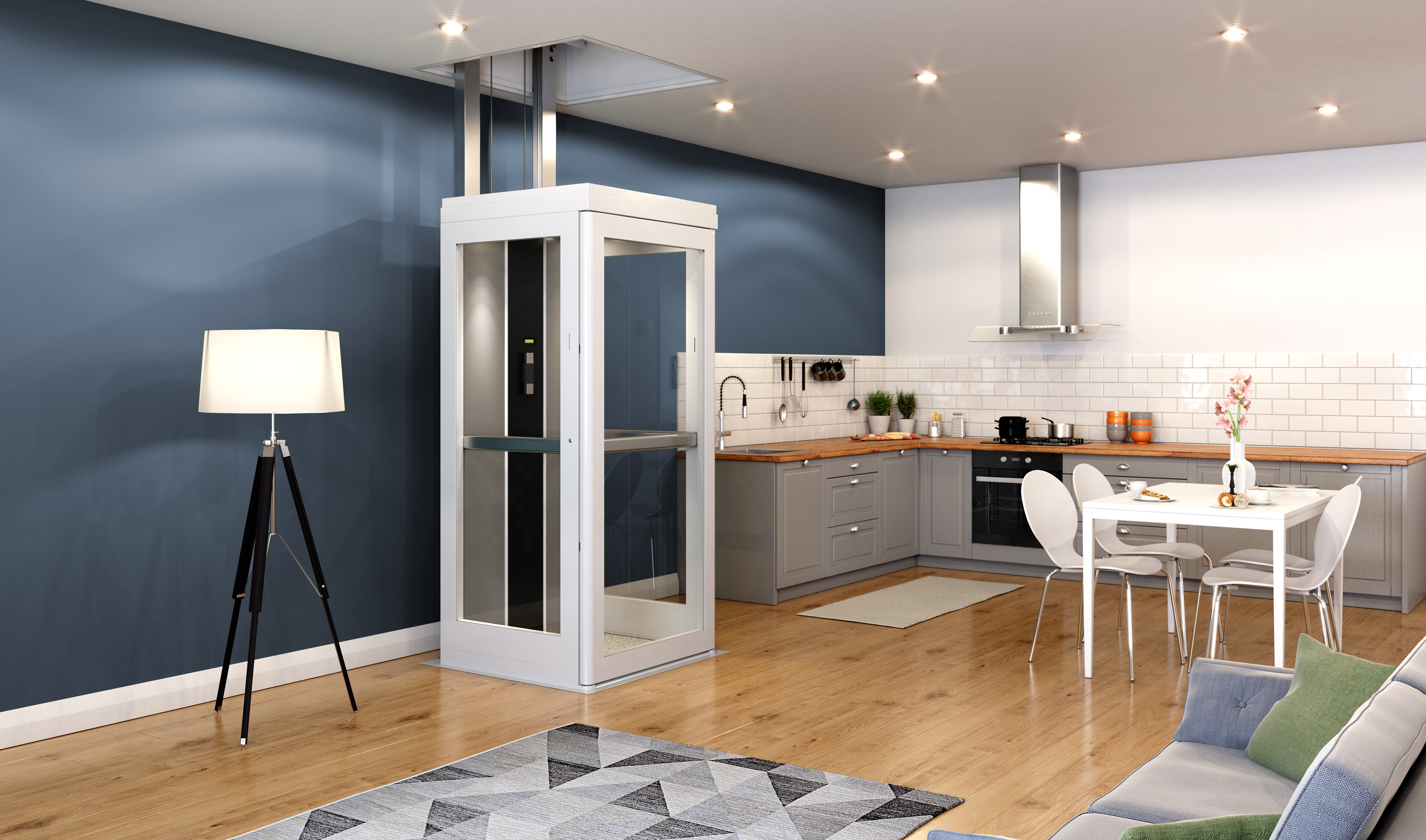
Advantages of Machine-Room-Less (MRL) Elevators
MRL elevators’ advantages extend beyond their innovative design, particularly highlighting their significant contribution to space conservation and energy efficiency.
- No Machine Room: This is the biggest advantage! MRL elevators eliminate the need for a separate, dedicated machine room. The compact equipment fits directly within the elevator shaft, maximizing usable space in the home.
- Fewer Moving Parts: The simplified design can lead to easier and less frequent maintenance needs.
Disadvantages of Machine-Room-Less (MRL) Elevators
However, the innovative design of machine room-less elevators does come with its set of limitations.
- Capacity and Performance: Residential MRLs are usually tailored for home use, so weight and speed limitations are generally sufficient. However, it is essential to assess a particular MRL’s capacity against your household’s needs.
- Installation complexity: Installing an MRL elevator can be more complex than installing a traditional elevator with a dedicated elevator machine room. This complexity arises from integrating the operational machinery into the shaft, which requires meticulous planning and coordination early in the building design process.
Despite these challenges, MRL elevators’ advantages, including their sleek design, efficiency, and space-saving features, make them a favored option for many constructions seeking versatile and efficient vertical transportation solutions.
Limited-Application (LULA) Commercial Elevators
Limited-Application (LULA) Commercial Elevators are specially designed to service low-rise commercial buildings.
These elevators are engineered to bridge the gap between traditional commercial elevators and other less sophisticated lifting devices, offering an optimal balance of functionality and space utilization.
LULA elevators are particularly beneficial in scenarios where full-sized commercial elevators may not be feasible due to spatial, financial, or structural constraints.
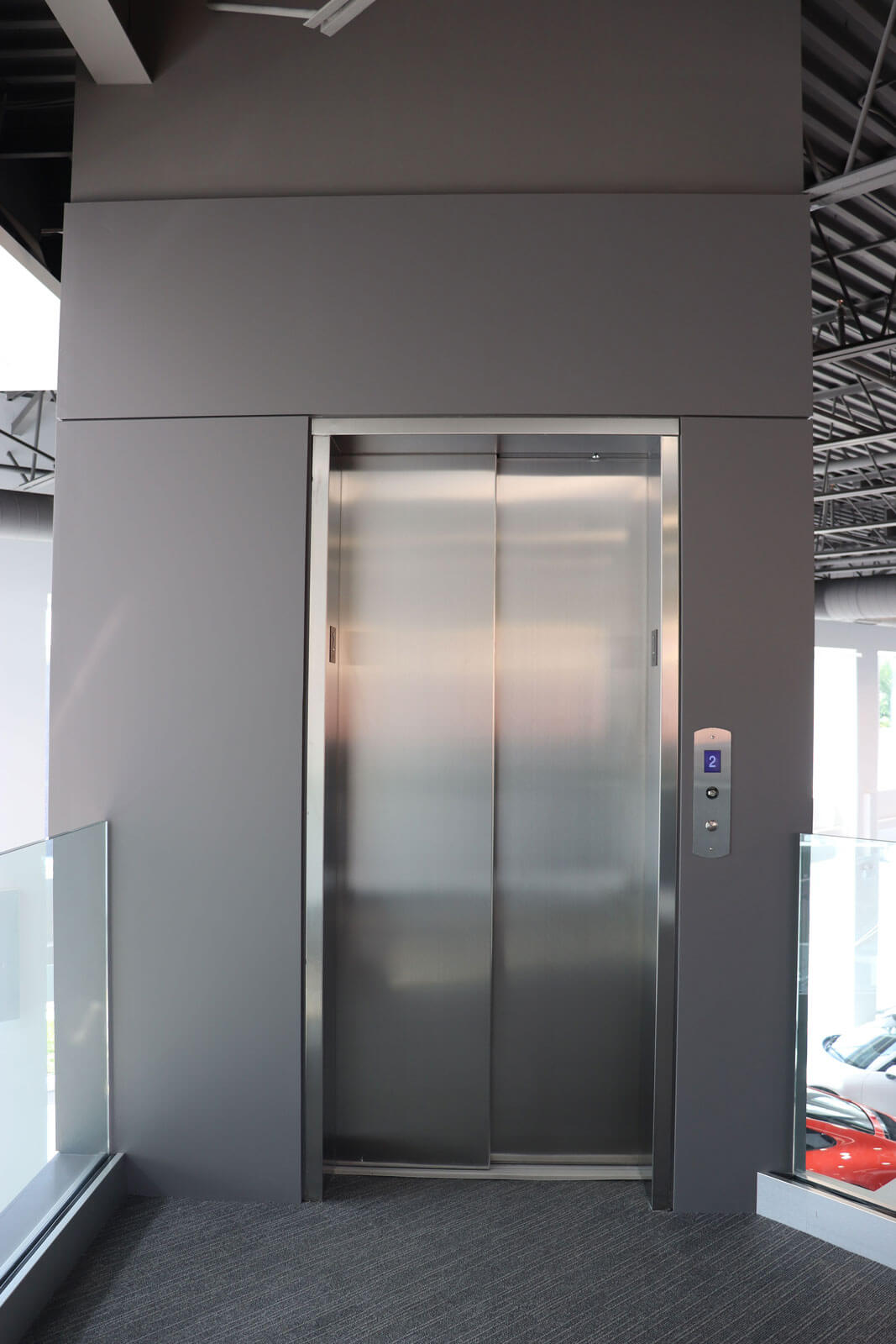
Benefits and Drawbacks of Limited-Application (LULA) Commercial Elevators
Among the primary benefits of LULA elevators include the following:
- Compliance with accessibility regulations: LULA elevators are essential for public buildings to accommodate individuals with disabilities, ensure equal access, and widen the building’s appeal.
- Cost-effectiveness: They present a more economical alternative for buildings with limited vertical travel needs and lower installation and maintenance costs than standard commercial elevators.
However, it’s worth noting that LULA elevators have limitations, including restricted capacity and slower speeds than their standard commercial counterparts. These restrictions may impact their suitability for high-traffic environments or the need to transport large or heavy goods frequently.
Despite these limitations, the versatility of LULA elevators makes them ideal for various applications.
From small office buildings and boutique retail establishments to private clinics and community centers, LULA elevators offer a practical solution for enhancing accessibility and mobility within compact spaces.
For those considering adopting a LULA elevator in their next project, visit Ascend Residential Elevators & Lifts LULA commercial elevators, which include design options and technical specifications to meet diverse commercial needs.
Pneumatic Vacuum Elevators (PVE)
Pneumatic Vacuum Elevators (PVE), the only air-driven elevators in the world, offer a futuristic and efficient approach to vertical transportation within residential settings.
Unlike traditional elevators that rely on complex elevator hoist systems and substantial machine room systems, these elevators operate using air pressure differences created above and beneath the elevator cab.
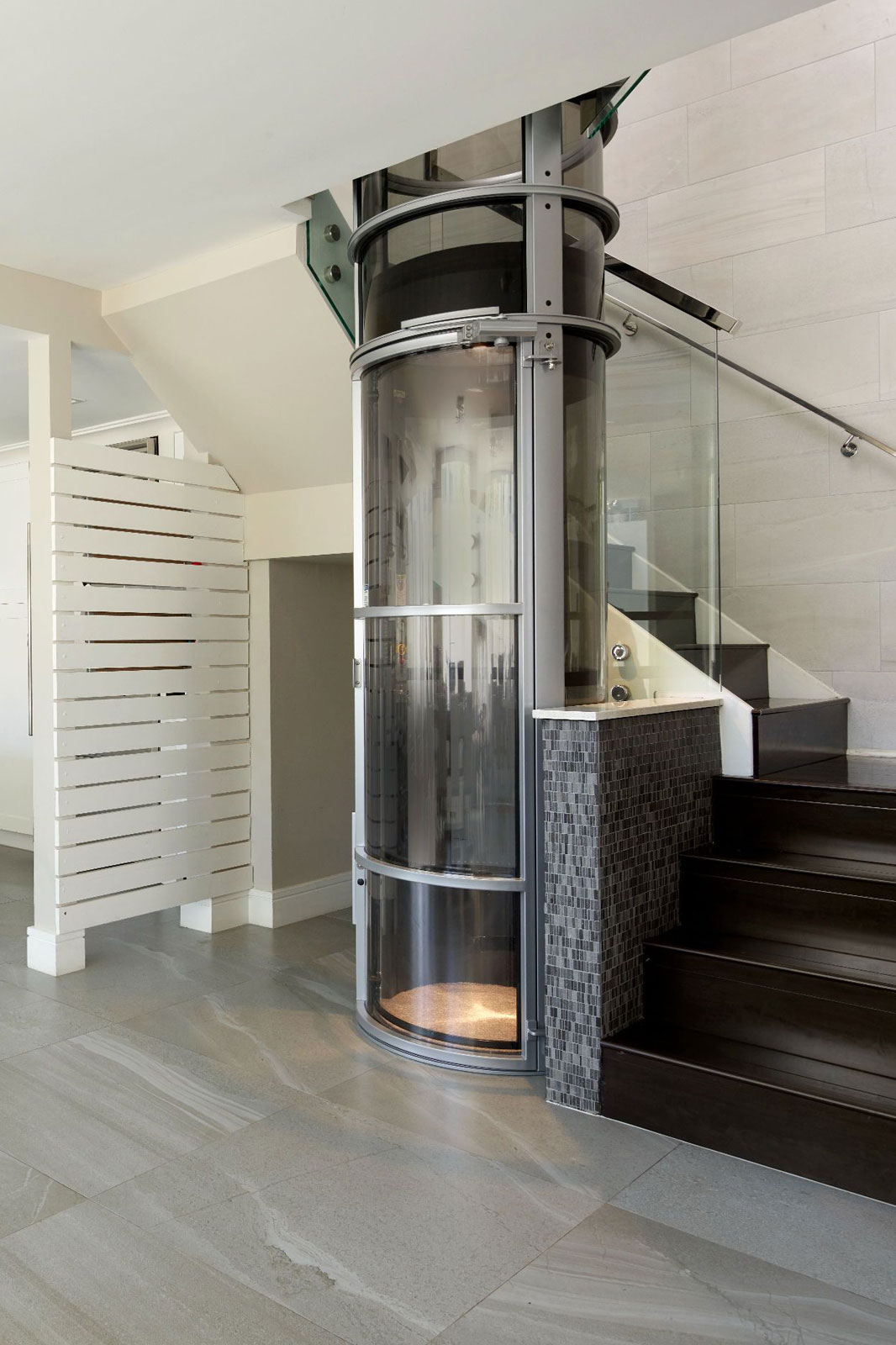
Advantages and Disadvantages of Pneumatic Vacuum Elevators (PVE)
Among the most significant advantages of Pneumatic Vacuum Elevators (PVE) include the following:
- Sleek, transparent design: Pneumatic Vacuum Elevators (PVE) are known for their striking look, featuring a transparent design that adds a touch of elegance to any home decor.
- Minimal footprint: These elevators are particularly suitable for installations with limited space. Unlike traditional elevators, they do not require a pit or a machine room, significantly reducing the space needed for installation.
- Simplified installation: The absence of a pit or machine room saves space and simplifies the installation process. This makes it easier to retrofit these elevators into existing homes, increasing the locations where they can be installed.
However, it’s important to consider that Pneumatic Vacuum Elevators (PVE) have certain limitations.
Their capacity is generally lower than traditional passenger elevators, making them less suitable for heavy freight transportation scenarios. Additionally, while the operation is relatively quiet, the air-driven mechanism can produce noise that may be noticeable, depending on the environment.
For those interested, Ascend Residential Elevators & Lifts offers an extensive selection of residential Pneumatic Vacuum Elevators, showcasing various design options and technical specifications to suit various residential needs.
Residential Elevators
Residential elevators represent a growing trend in home design, driven by a desire for convenience and accessibility and an aging demographic seeking comfortable living spaces in their own homes.
The advent of various types of residential elevators, including traditional, pneumatic, and wheelchair-accessible models, has transformed the concept of vertical travel within a home setting.
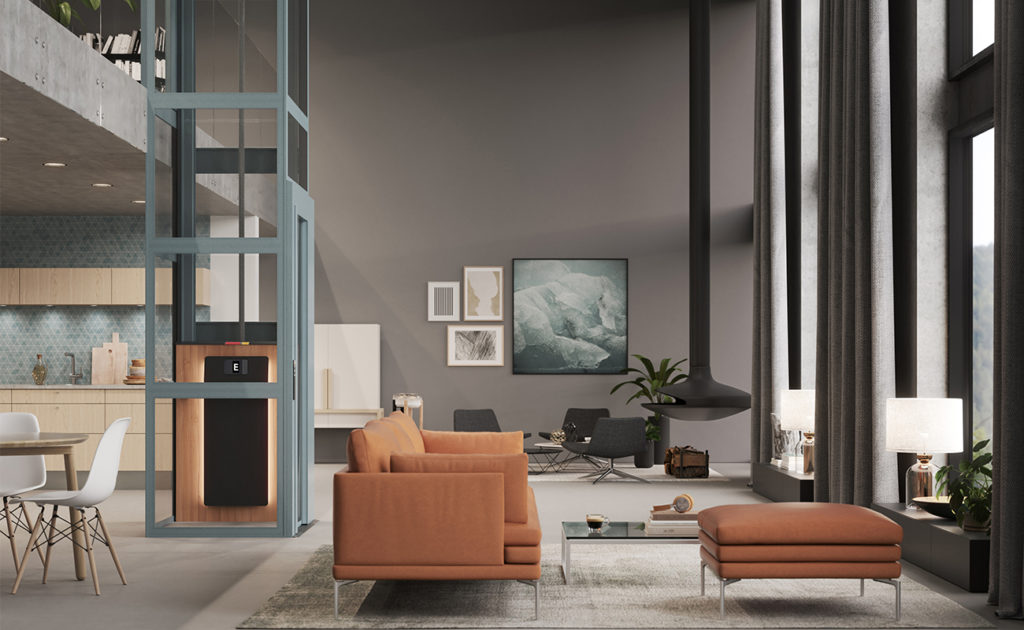
The Benefits of Residential Elevators
Traditional residential elevators are reliable and seamlessly integrated into a home’s structural design. Pneumatic Vacuum Elevators (PVE) offer a sleek option with minimal space requirements, while wheelchair-accessible models prioritize accessibility for individuals with mobility challenges.
The benefits of integrating a residential elevator go beyond simple aesthetics or luxury; they provide a vital service in terms of accessibility and convenience.
For multi-story homes, elevators provide a luxurious and convenient way to move between floors. They offer benefits beyond accessibility for the elderly or those with physical disabilities. Many homeowners choose to install elevators for the added ease, comfort, and even enhanced resale value they provide.
Additionally, they can significantly increase a property’s value by adding a desirable feature that future buyers may seek.
Factors to Consider
Homeowners considering adding a residential elevator must consider several important considerations. Space is a primary concern, as the type of elevator chosen will dictate the amount of physical space required for installation.
Budget is another critical factor, as the cost can vary widely based on the type of elevator, the installation’s complexity, and any desired custom features. Despite these considerations, the long-term benefits often outweigh the initial investment, particularly for those looking to make their home more accessible.
For those exploring the addition of an elevator to their home, Ascend Residential Elevators & Lifts offers a comprehensive guide to the types of home elevators. It provides valuable insights into the different models available, design options, and technical specifications.
A residential elevator can significantly enhance any home, whether for luxury, convenience, or necessity.
Elevate Your Spaces with Ascend Additions
The market offers diverse elevators to suit commercial and residential needs, including LULA commercial elevators, Pneumatic Vacuum Elevators (PVE), and various residential elevator models.
Each type encompasses unique features and benefits — from the elegant and space-saving design of Pneumatic Vacuum Elevators (PVE) to the reliability and capacity of traditional residential lifts and the compliance and convenience offered by LULA elevators in commercial settings.
The selection of an elevator type should be meticulously aligned with specific requirements, such as space availability, intended use, aesthetic preference, and budget constraints. We encourage readers to consider their unique needs carefully when deciding on an elevator solution.
Ascend Residential Elevators & Lifts is dedicated to providing a comprehensive suite of elevator solutions that cater to a wide range of commercial and residential preferences.
With our extensive selection and expert guidance, we are committed to helping you make an informed decision that maximizes your space’s functionality, aesthetics, and value.
Contact us today to explore our range of elevator models and find the perfect fit for your needs. Elevate your spaces with Ascend Residential Elevators & Lifts, where innovative design meets unparalleled convenience.
